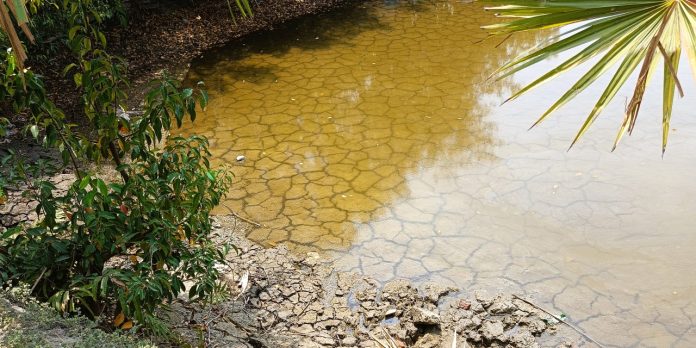When dawn breaks over the lush landscapes of Bangladesh, we are reminded of the beauty
and fragility of our environment. The air, fresh and alive with the earthy scent of wet soil,
carries the melody of birdsong – the lively chirping of sparrows and the gentle cooing of doves.
In the distance, the soft murmur of a flowing river blends with the rhythmic creaking of bullock
carts, moving at a leisurely pace… When we think about the nature and environment of
traditional Bangladesh, these charming scenes come to our eyes. But alas! Where have these
charming scenes gone?
On World Environment Day, this year, the global theme, “Our land. Our future. We are GenerationRestoration,” resonates deeply with us, urging a new commitment to land restoration, combating desertification, and enhancing drought resilience.
The Heart of the Delta: Rich Yet Vulnerable
Bangladesh, cradled by the mighty Ganges, Brahmaputra, and Meghna rivers, is a country
blessed with fertile plains and green hills. Agriculture, the backbone of our economy, thrives on
this rich land, providing food and livelihood to millions. However, the very land that feeds us
faces many challenges nowadays.
The Encroaching Threat of Desertification
While Bangladesh is often associated with flooding, the lesser-known threat of desertification
appears large. The northwestern region, known as the Barind Tract, is increasingly vulnerable
to land degradation. Unsustainable agricultural practices, deforestation, and climate change
have accelerated soil erosion and depletion. This degradation transforms once-productive fields
into barren lands, threatening food security and local economies.
Battling Drought: A Growing Concern
Though not traditionally identical to Bangladesh, drought has become a pressing issue.
Changing weather patterns and unpredictable rainfall have led to prolonged dry season,
particularly in the Barind and coastal areas. These droughts not only impact crop yields but also
deplete water resources, leading to severe water scarcity for both agriculture and daily life
Steps Towards Restoration: A Collective Effort
In light of these challenges, Bangladesh stands at a crossroads. Embracing the theme of “Our
land. Our future,” we must prioritize sustainable practices and innovative solutions to restore
our land. Several key initiatives can lead the way:
- Sustainable Agriculture: Promoting organic farming, crop rotation, and agroforestry can
rejuvenate the soil and enhance biodiversity. Farmers need access to training and resources to
adopt these sustainable methods. - Reforestation and Afforestation: Planting trees and restoring forests can prevent soil
erosion, improve water preservation, and provide habitats for wildlife. Community-led
reforestation projects can mobilize local populations to actively participate in greening their
surroundings. Naturally occurring forests should be allowed to grow on their own. Of course,
naturally grown forests are a boon to our nature more than man-made forests. Moreover, when
doing man-made afforestation, we should select trees according to our country’s ecosystem to
ensure the approach is sustainable. - Water Management: Implementing efficient and sustainable irrigation systems, rainwater
harvesting, and constructing small-scale dams can mitigate the impacts of drought. These
measures ensure a reliable water supply even during dry periods. - Energy Transition: Energy transition, particularly the shift to renewable energy sources like
solar and wind, plays a crucial role in land restoration and drought resilience. By reducing
reliance on fossil fuels, which contribute to climate change and land degradation, renewable
energy sources help mitigate the impacts of extreme weather events and prolonged droughts.
Renewables also use less water, allowing for better water management and irrigation practices.
This creates healthier soil that retains water more effectively, making landscapes more resilient
to droughts – a win-win for both energy and land. - Community Awareness and Education: Raising awareness about the importance of land
conservation and sustainable practices is important. Educational programmes in schools and
communities can introduce a sense of responsibility towards the environment. - Government Policies and Support: Strong policies that support land restoration and
sustainable development are essential. Government incentives for sustainable farming,
investment in green technologies, and enforcement of environmental protection laws can drive
significant change.
A Call to Action
As we celebrate World Environment Day 2024, let us heed the call to restore our land and
secure our future. Each one of us has a role to play in this journey. By fostering a culture of
sustainability and resilience, we can transform the landscapes of Bangladesh, ensuring that they
remain fertile and vibrant for generations to come.
The time is now. Together, as #GenerationRestoration, we can turn the tide against land
degradation and drought. Our land is our heritage; its restoration is our legacy. Let us pledge to
protect and rejuvenate it, for our future and the future of our children. Our collective efforts
today will shape a greener, more sustainable tomorrow.
Dewan Nurtaj Alam
Environment & Climate Change Activist and Development Practitioner
Email: nurtajalam@gmail.com

